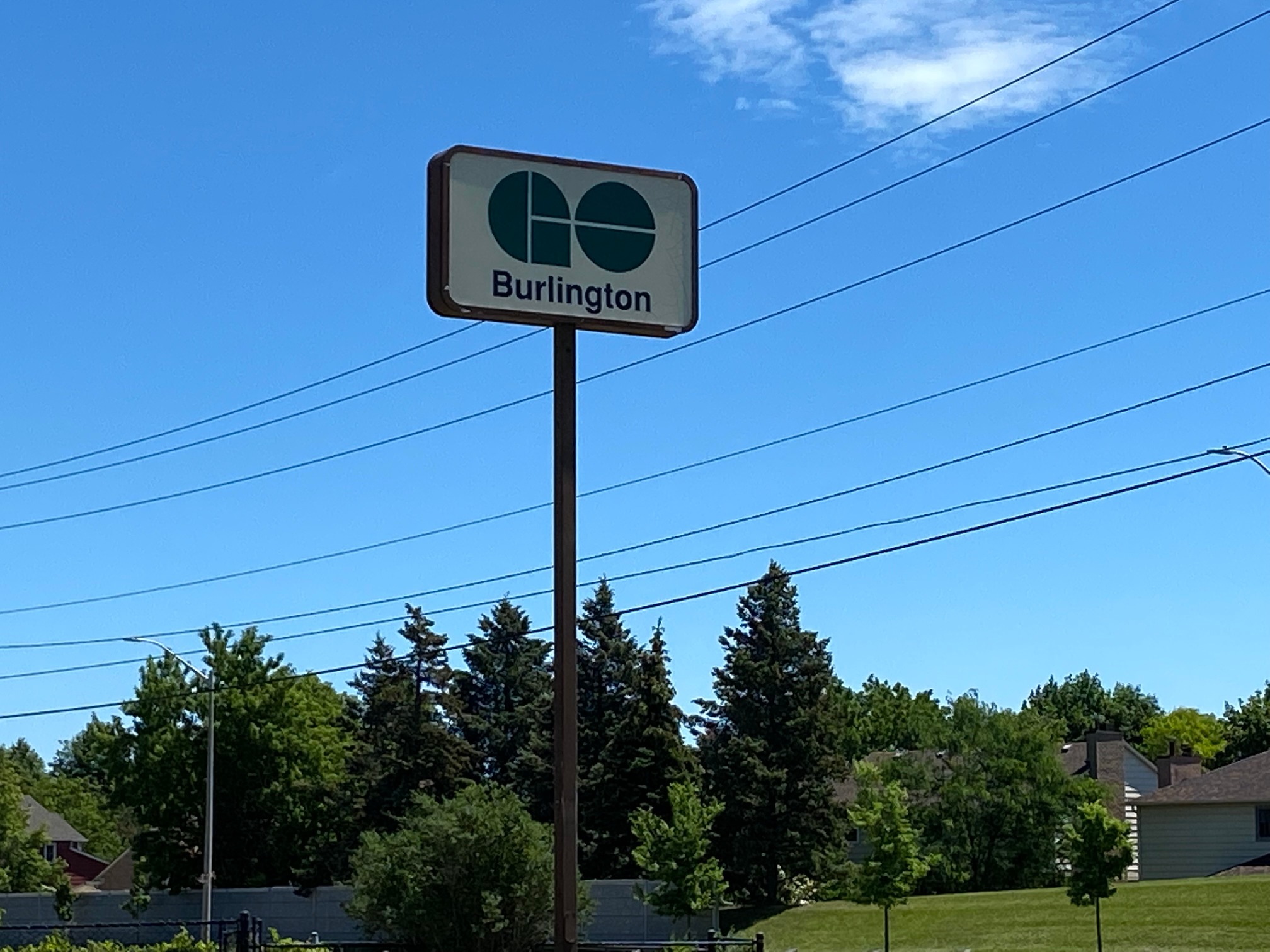The provincial Ministry of Municipal Affairs and Housing announced this morning that Burlington will be able to adjust the boundary of its existing Urban Growth Centre (UGC) designation. The growth designation was centred on the downtown core. This will shift to the area surrounding Burlington GO Station on Fairview, which will direct future height and density near the major transit centre. This decision supports Burlington’s revised new Official Plan (OP).
Jane McKenna, MPP Burlington, noted: “This re-designation will put homes near transit, which aligns with the policies laid out in the provincial Growth Plan for the Greater Golden Horseshoe…It will also help preserve the many incredible features that make Burlington unique.”
Mayor Marianne Meed Ward said that she is “absolutely thrilled by today’s announcement…This has been a truly collaborative process with our community, including residents, developers, partner agencies, your city council, city and regional leaders and staff, our regional chair and fellow Halton mayors. This outcome today is also the result of a great deal of hard work and advocacy from our local MPP Jane McKenna, and everyone at the Ministry of Municipal Affairs and Housing, led by Minister Clark.”
Heather MacDonald, executive director of Community Planning, Regulation and Mobility for the City of Burlington, said that this “aligns nicely with our revised new Official Plan and Major Transit Station Areas [MTSA] project. Our team is also working closely with Halton Region on their Official Plan Review, currently underway.”
Some background and context:
The boundary delineation of the Downtown Burlington UGC was developed by the province in 2008 as part of the implementation of the Growth Plan and identified in the Regional Official Plan Amendment 38 (ROPA 38). In August, 2020, city staff recommended: request that the Region of Halton, through its Municipal Comprehensive Review (MCR) of the Regional Official Plan, adjust the boundary of the Downtown Burlington Urban Growth Centre to generally align with the lands in proximity to Burlington GO Station. The Halton Region Downtown Burlington UGC and MTSA Supplemental Discussion Paper proposed removal of the Downtown Burlington MTSA designation and proposed an adjusted UGC boundary, to generally align with the lands in proximity to Burlington GO Station.
In 2019, Burlington council passed an interim control bylaw (ICBL) to temporarily restrict development of lands in the Downtown Burlington UGC and the lands in proximity to Burlington GO Station. The city retained Dillon Consulting to undertake an “interim control by-law land use study.” The land use study was to assess the role and function of the downtown bus terminal and Burlington GO Station as MTSAs. The ICBL land use study concluded that the downtown bus terminal does not function as a major bus depot and investments are not anticipated to elevate the bus terminal’s status beyond its current function as an intercity bus transfer point. On April 27, 2020, the Region of Halton and the City of Burlington received a letter from the Ministry of Municipal Affairs and Housing and the Ministry of Transportation confirming that there is no provincial requirement for mobility hubs to be identified in municipal official plans, including downtown Burlington. Both ministries agreed that the downtown John Street bus terminal does not constitute a mobility hub as it is not located at the intersection of multiple frequent rapid transit network routes.
Urban Growth Centre: the growth plan (see Places to Grow, below) established downtown Burlington as an Urban Growth Centre, which was to be planned to accommodate a significant share of population and employment growth. Urban Growth Centres are required to achieve a minimum development density target of 200 residents and jobs combined per gross hectare by 2031 or earlier. The growth plan defines Major Transit Station Areas as “the area including and around any existing or planned higher order transit station within a settlement area,” and generally defines station areas as areas “within an approximate 500 metre radius of a transit station, representing about a 10-minute walk.” Policy 2.2.5.1 states that MTSAs will be designated in official plans and planned to achieve “increased residential and employment densities that support and ensure the viability of existing and planned transit service levels; and a mix of residential, office, institutional, and commercial development wherever appropriate.”
As part of the Halton Regional Official Plan Review, a supplemental discussion paper was prepared in October 2020 regarding the Downtown Burlington UGC and MTSA designation. That paper considered removal of the MTSA designation and adjustment to the UGC boundary. “In August 2020, City of Burlington Council requested that the Region, through its Municipal Comprehensive Review adjust the boundary of the Downtown Burlington UGC to generally align with the lands in proximity to the Burlington GO Station and remove the MTSA designation from the Downtown.”
The Provincial Policy Statement (PPS)provides policy direction related to land-use planning and development and sets the policy foundation for regulating development and use of land. The current PPS came into effect on May 1, 2020. All planning decisions are required to be consistent with the PPS.
Places to Grow: Growth Plan for the Greater Golden Horseshoe (2013): this growth plan was established under the Places to Grow Act, 2005, and took effect in 2006. The plan was amended in 2013 and provides a policy framework for managing growth in the Greater Golden Horseshoe to the year 2031. The growth plan directs municipalities to accommodate population and employment growth by “directing a significant portion of new growth to the built-up areas of the community through intensification” and by “focusing intensification in intensification areas” (section 2.2.2 a and b). The growth plan requires that municipalities develop and implement, through their official plans and other supporting documents, a strategy and policies to phase in and achieve intensification and the intensification target (section 2.2.3.6).
The appropriate locations and opportunities for intensification in Burlington are described in the City of Burlington’s Official Plan (OP) and development standards are provided in the OP evaluation criteria and through the city’s zoning bylaw.Official Plan policies direct new growth to the built-up areas and focus intensification in the mixed-use centres and intensification corridors.
City of Burlington OP Review: the city retained Brook McIlroy to complete a Mobility Hubs Opportunities and Constraints Study (MHOC Study). The team identified primary, secondary, and tertiary boundaries for each mobility hub and provided recommendations, which were presented to council in May 2014. The report provided a draft OP direction to “concentrate the greatest densities in close proximity to the transit services along the key transit corridors to protect adjacent residential neighbourhoods and heritage buildings” (MHOC Study, p. 59).
The Big Move: Transforming Transportation in the Greater Toronto and Hamilton Areas (2008) is a provincial policy document prepared under the Metrolinx Act (2008) that contains action items to develop and implement a multi-modal transportation plan. The Big Move identifies anchor and gateway mobility hubs and many of these hubs coincide with UGCs and Major Transit Station Areas (MTSAs). The Big Move identifies the MTSA and the area within an 800-metre radius (approximately) of the transit station as the mobility hub. These areas are “generally forecasted to achieve, or have the potential to achieve, a [total] minimum density of approximately 10,000 people and jobs within an 800-metre radius” (The Big Move, p. 88). On Schedule 2: 25 Year Plan for Regional Rapid Transit of the Big Move, downtown Burlington was designated as an anchor mobility hub. The growth plan defines MTSAs as the area within a 500- to 800-metre radius, including and around any existing or planned higher order transit station (e.g. rail, rapid transit or express bus service) within a settlement area; or the area including and around a major bus depot in an urban core.
Sources:
Brook McIlroy. 2014. Mobility Hubs Opportunities and Constraints Study. Study by Brook McIlroy, requested by City of Burlington.
City of Burlington. 2021, June 15. Minister of Municipal Housing and Affairs Announces Burlington Can Adjust UGC Boundary. E-notice (sent to subscribers).
Government of Ontario. Url: https://files.ontario.ca/mmah-provincial-policy-statement-2020-accessible-final-en-2020-02-14.pdf (accessed June 15, 2021).
Halton Region and City of Burlington. 2020. Downtown Burlington Urban Growth Centre and MTSA Supplemental Discussion Paper. October 2020. Regional Official Plan Review. Url: https://www.halton.ca/Repository/Downtown-Burlington-Urban-Growth-Centre-and-MTSA-S/ (accessed June 15, 2021).
Metrolinx. 2008. The Big Move: Transforming Transportation in the Greater Toronto and Hamilton Areas. Greater Toronto Transportation Authority, Toronto. Url: http://www.metrolinx.com/thebigmove/Docs/big_move/TheBigMove_020109.pdf (accessed June 15, 2021).




